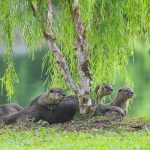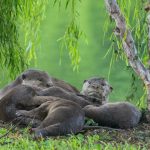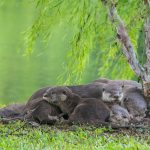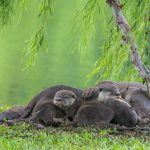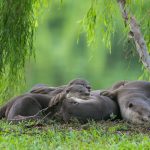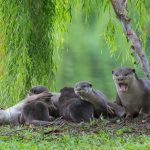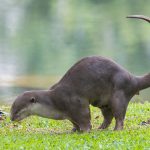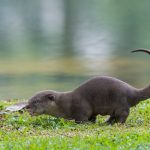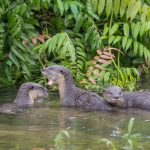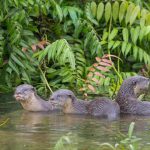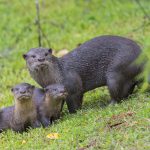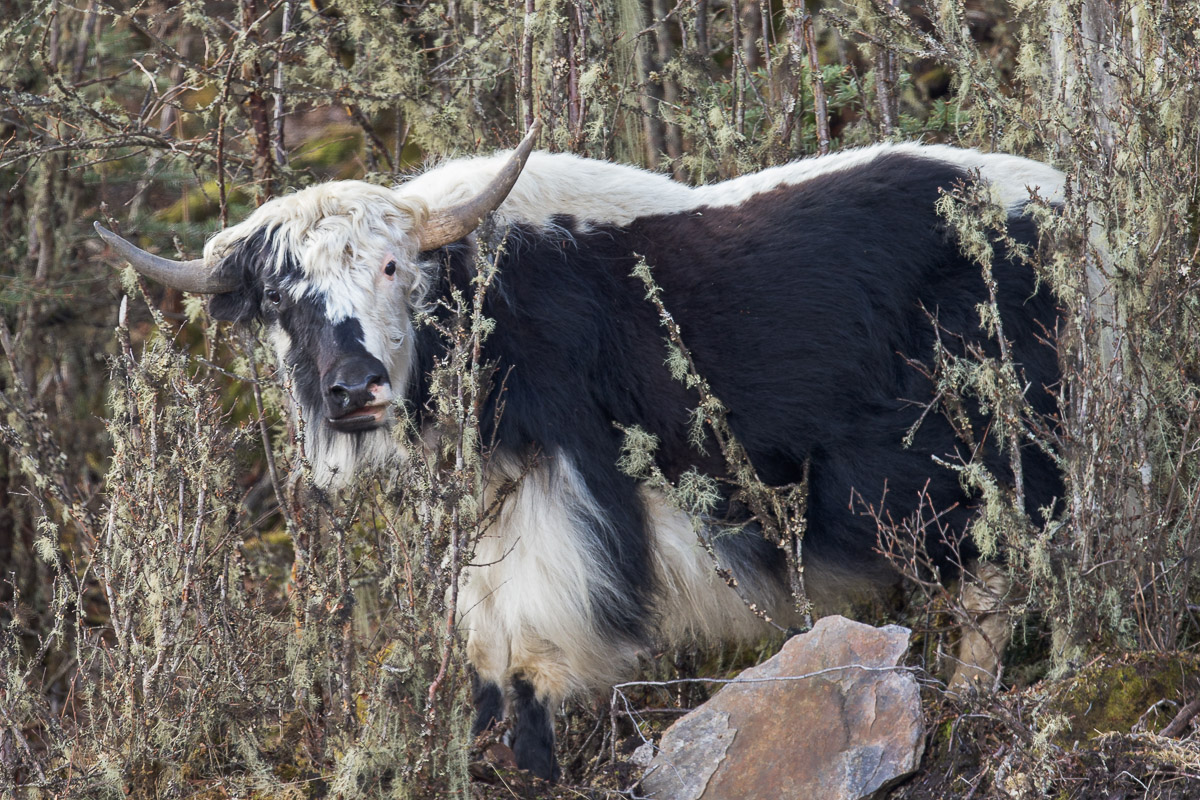I had been eagerly following the news of the Smooth-coated Otter family from Bishan for some time, but did not have the opportunity to see them in person sooner due to other commitments.
To recap, there is now a family of Smooth-coated Otters that has made their home at Bishan Park. To understand the circumstances of how they came about and to enjoy really great commentary and pictures about them, please head to these two Exposure stories and pictorial by Shirley Ng (LINK) and Jeff Tan (LINK). They have been following these otters and documenting them from the very beginning.
My experience was just one overcast and rainy evening on 21 April 2015, so just a tiny snapshot of the family. Thanks to Shirley for informing me of their whereabouts. I knew what angle I wanted to concentrate on, even before the encounter, so out came the seldom used tripod! Thankfully the otters put up a good show as well. Below are the photos and the video
To ensure sane load time, I have separated the article and the rest of the photos. Please click on the respective photos in the photo gallery for more commentary.
Photo Gallery
- The otters are looking curiously at some people at the palm grove on the right, trying to get a closer peep.
- A pile of otters. The young otters are nursing. Papa is on the left and Mama is on the right.
- Despite the idyllic scene, the otters can spring to action in an instant. You can watch the second video below for an example of this. They chose this particular patch for a reason. The ground is just next to the pond, where they can escape to the safety of water quickly, if need be,
- It was drizzling and slightly windy evening, with the weeping willow tree gently swaying to the breeze. Half sleeping otters cuddling. The backdrop of a pond reflecting the greenery nearby. What’s there not to like?
- It is the ‘hands’ that do it for me. Unlike other four legged animals, otters seem to grasp things almost human-like and when they put their paws on each other, they seem like comforting one another. But I am no otter expert, so just a conjecture.
- Despite Papa otter showing of fangs, the otters are not aggressive at all. They are actually a calm family as long as you keep your distance. If you get too near they scramble. They are checking out the crowd that were gathering near the photographers.
- Papa otter going about his pooping business.
- Whatever papa does, so can the little one. This picture is cropped a bit closer, so the baby otter is actually smaller.
- Every otter is looking at a different direction for their parents. At this stage, they can swim well enough, but are dependent on their parent for food, as they still have not learned the finer art of catching fish yet.
- The 3 little otters, after all their houses have been blown down by the big bad wolf (OK I made that up). They are actually at the little island safe from any human.
- Two little otters and their parent after a swim. Looking warily at the growing crowd.
Videos
Sometimes, photos alone don’t do enough justice in conveying animal behaviour. That’s when videos come in handy. Hope you enjoy the snippets obtained. These were prepared in full HD format. I have embedded them in the article, but click on the title of the video to launch it in full resolution at YouTube to have a better experience.
1. The otter family preparing their resting place by smearing and rolling on the grass and soft earth that was wet due to the slight drizzle. They were having a rollicking good time as well. As this stage I was positioned rather far despite my long lens system as I was unsure about their temperament.
2. I found a better position to observe their frolicking and the subsequent nursing of the young otters. You can see how wary the parents were by their constant checking of their surrounding. Out of the camera view, a middle-aged man got very near to take photos presumably using his camera phone. I tried in vain to beckon him to move further earlier and you can see him at the 3:44 mark and the subsequent reaction of the family.
3. Having decided that we were of no threat, Shirley, Jeff and I inched closer. I had the longest lens, so I was good for a full frame video.
4. I think this is about the best video of the lot. Loving family with a beautiful backdrop, with the sound of the urban surroundings.
5. Bonus video. It started raining and the otters had to leave and the photographers had to temporarily scramble. It’s a wrap then!
Lastly, it looks like the otters are making a comeback in Singapore over the past few years. There are now otter families regularly sighted at Gardens by the Bay, Sungei Buloh, Lorong Halus and Pasir Ris Park. I have seen grownups squeal in delight seeing them for the first time. There is much to be said about our local charismatic megafauna and its effect on us. If we do want them to stay around, at the minimum please let them have their personal space and tolerate the things that they do. They are not pets, cuddly as they may seem. Wildlife deserve a place in Singapore, and we should do our part to conserve whatever is left. The tigers are long gone, but at least we should keep our otters.

